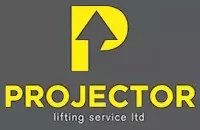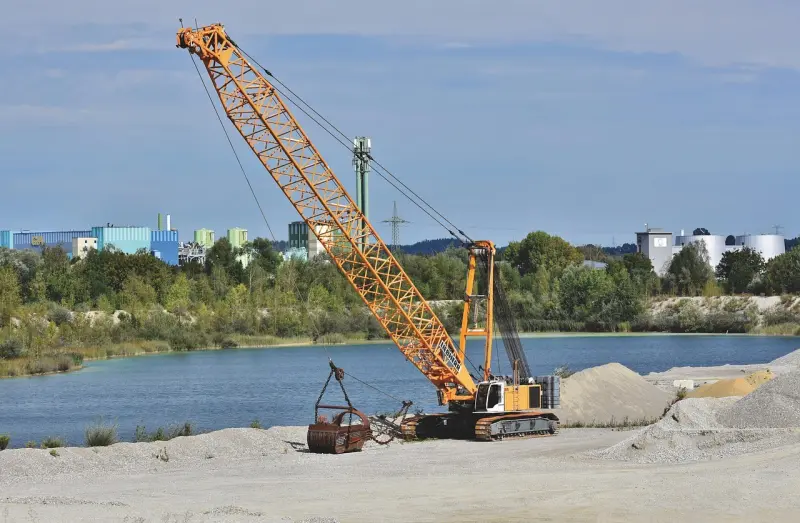This article looks into what is heavy lift equipment? We explore the different types of heavy lifting equipment and heavy lifting technology.
Different Types of Heavy Lifting Equipment
There are many different types of heavy lifting equipment available in the industry. This includes forklifts, winches, hoists, cranes, and vacuum lifts.
Each machine uses a specialist unique mechanism to manipulate an incredibly large and heavy object. Some devices will move the item up and down, or from side to side. Normally, a business will have to purchase or lease heavy lifting equipment based on the specific company's needs.
Forklifts are the most common lifting machine for most businesses. A worker will drive the forklift much like they would a small car or other vehicles.
The front of the forklift has two metal protrusions that can be slid into a wood pallet to move products around a warehouse or other open environment. The forked front end can lift items up and place them into tall storage areas in a completely safe manner.

Another common heavy lifting device is a winch. This mechanism uses a wound rope to pull items, such as during towing. Most winches are attached in a stationary position to a wall or even on a heavy service truck.
Workers can then attach the winch's end hook directly to an item, piece of equipment, or another object to allow the winding mechanism to pull the item along.
Hoists are used to pull heavy items upwards using a rope or chain. This form of heavy lifting equipment is typically used for lifting smaller products such as an oil drum.
Most hoists you find will be completely attached to the ground in a warehouse or workshop. The object that needs to be lifted will then be brought over to the hoist. Often times you will find forklifts being used in conjunction with hoists in order to move the item.
A crane uses an angled boom in order to move items up and down, as well as from side to side. When it comes to heavy lifting equipment types, the crane is one of the most versatile.
Cranes can be constructed to be either large or small, depending on what they will be needing to lift. Most crane designs will allow the lift to turn horizontally in a full 360-degree circle. This is for moving heavy objects in almost any direction.
Vacuum lifts use high-pressure air vacuums to adhere to a heavy object for lifting. These machines are extremely helpful when lifting unusually shaped objects, for example, a pane of glass.
These machines can also lift heavier objects such as cargo containers. They are used for ships, in order for them to load and unload efficiently.
Purchasing lifts can be incredibly expensive, because of this, most businesses will simply lease or rent whatever lift type they deem necessary. The type of lift can vary depending on the company's specific needs. Leases can usually be negotiated and contracted for daily, monthly, or yearly use.
The business owner will usually discuss what type of equipment is necessary with the equipment leasing company to ensure that the correct lift choice is being chosen.

Heavy Lifting Technology
Hydraulic gantries are a safe and efficient way to lift and position heavy loads during jobs where a traditional crane mechanism will not fit and there is no room for permanent overhead structures.
Hydraulic gantries are used alongside rail systems to provide a means for moving and placing heavy objects. They are a highly cost-effective solution for jobs that involve the lifting or rigging of objects.
The strand jack is a lifting technique that has come from the classic concrete post-tensioning principle. The strand jack is usually considered a linear winch.
With strand jacks, a collection of steel cables are sent through a hydraulic cylinder. Both above and below the cylinder there are anchor systems that use wedges to grip the bundle of strands. Through taking the cylinder in and out while the grips are being used, a lowering movement or lifting is achieved.
A jack-up system is a multipoint based lifting system. The usual system setup will include four jack-up units which are positioned underneath each corner of a load. The four-unit setup will have a lifting capacity of around 2000 metric tons.
That is 500 tons per unit. The lifting frame around a jack-up contains four hydraulic cylinders in each corner. These cylinders will lift and stack steel boxes.
A load is usually lifted in smaller increments as boxes are slid one by one into the system. The boxes are lifted and stacked, forming towers. Jack-up systems are operated and controlled by the computer control unit. Each of the unit's lifting and lowering functions will occur at the same time.
The control unit's synchronous programs will maintain the balance of the load. Each unit's lifting frame has hydraulic power units embedded within.

Gear Used In Heavy Lifting And Moving
Electric Chain Hoists come in the capacities of between 125 - 20,000kg. They are small but powerful lifting machines that are perfect for use on a construction project or industrial project whenever the manoeuvring of heavy-duty loads are necessary.
Scaffolding hoists are an important part of the lifting industry and there are a huge variety of different types which can ensure that your work is done efficiently and safely. They are capable of lifting loads up to 800kg with ease.
Designed for the transferring and lifting of plates such as steel sheets and other highly similar materials. They are available in both vertical and horizontal varieties.
Are you planning industrial lifting in the UK? If you need to lift heavy objects or machinery, we offer industrial lifting equipment and lifting services for the construction and industrial industries.
Follow the links below to find out more about our specialist lifting services throughout the UK.

